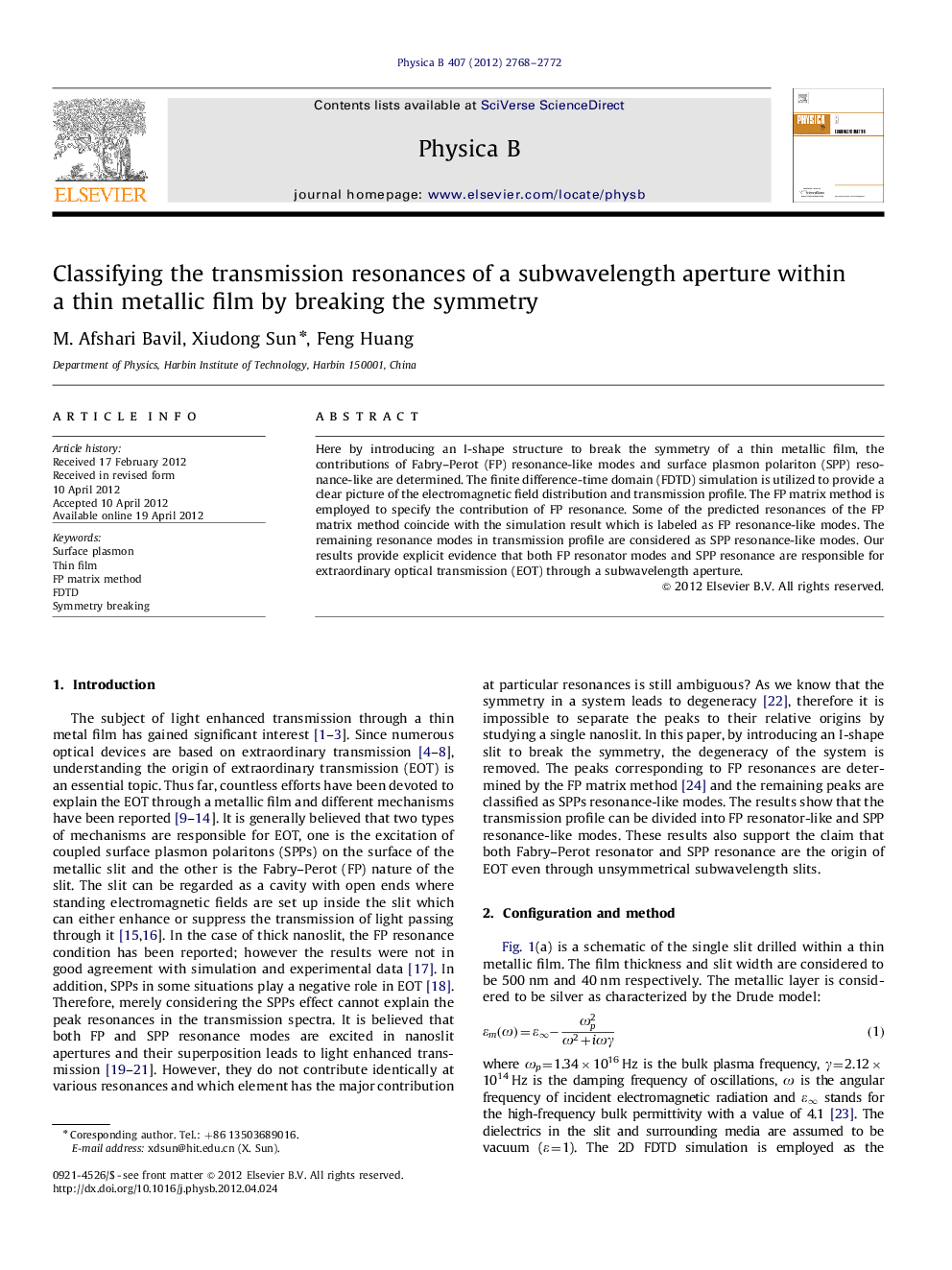| Article ID | Journal | Published Year | Pages | File Type |
|---|---|---|---|---|
| 10714082 | Physica B: Condensed Matter | 2012 | 5 Pages |
Abstract
Here by introducing an I-shape structure to break the symmetry of a thin metallic film, the contributions of Fabry-Perot (FP) resonance-like modes and surface plasmon polariton (SPP) resonance-like are determined. The finite difference-time domain (FDTD) simulation is utilized to provide a clear picture of the electromagnetic field distribution and transmission profile. The FP matrix method is employed to specify the contribution of FP resonance. Some of the predicted resonances of the FP matrix method coincide with the simulation result which is labeled as FP resonance-like modes. The remaining resonance modes in transmission profile are considered as SPP resonance-like modes. Our results provide explicit evidence that both FP resonator modes and SPP resonance are responsible for extraordinary optical transmission (EOT) through a subwavelength aperture.
Related Topics
Physical Sciences and Engineering
Physics and Astronomy
Condensed Matter Physics
Authors
M. Afshari Bavil, Xiudong Sun, Feng Huang,
